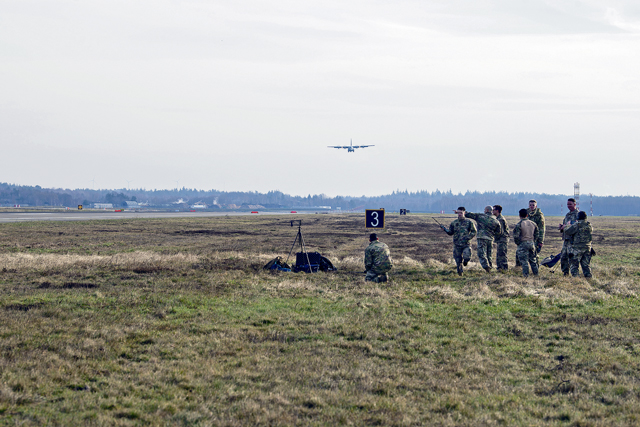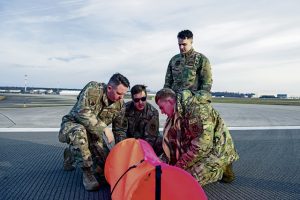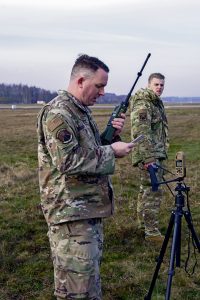
Are you someone who claps when the plane lands? Pilots usually get all the credit; however, there are those who ensure the landing will be safe far before the aircraft touches the ground.
Landing zone safety officers are in charge of surveying landing zones in austere environments, ensuring the appropriate measurements from above, on and below the ground are sent to pilots to inform them of ground conditions prior to landing.

The 86th Operations Support Squadron LZSOs have developed a local proficiency program to ensure maximum cost and time efficiency. The program is open to aircraft traffic controllers, airfield managers and radar weather and landing system technicians, providing them an opportunity to become multi-capable Airmen.
While the program has traditionally been taught at Scott Air Force Base, Ill, opening up the opportunity at Ramstein AB means more overseas Airmen get trained with a reduced cost to the Air Force.
“This program allows us to train and continue to sharpen our skills locally while also gaining the experience needed to ensure that we are ready for real-world applications if called upon,” said U.S. Air Force Staff Sgt. Vincent Coleman II, 86th OSS, air traffic controller tower watch supervisor. “The intention is to be able to complete the mission with a minimum amount of personnel and resources, while still delivering the desired effects to the respective combatant commander.”
In order to maintain proficiency, the program will need to be practiced annually to maintain the strict standards of the competency. LZSO’s are given a huge amount of responsibility and consistent training ensures that everyone is capable of setting up a landing zone no matter the situation.
“In my experience the course provides the opportunity for Airmen to not only step outside of their usual scopes, but allow the Air Force to land aircraft almost anywhere in the world,” said Staff Sgt. Hunter Crosby, 86th OSS radar airfield weather systems squadron executive. “It provides a new skill set and helps define what it means to be a multi-capable Airman.”



